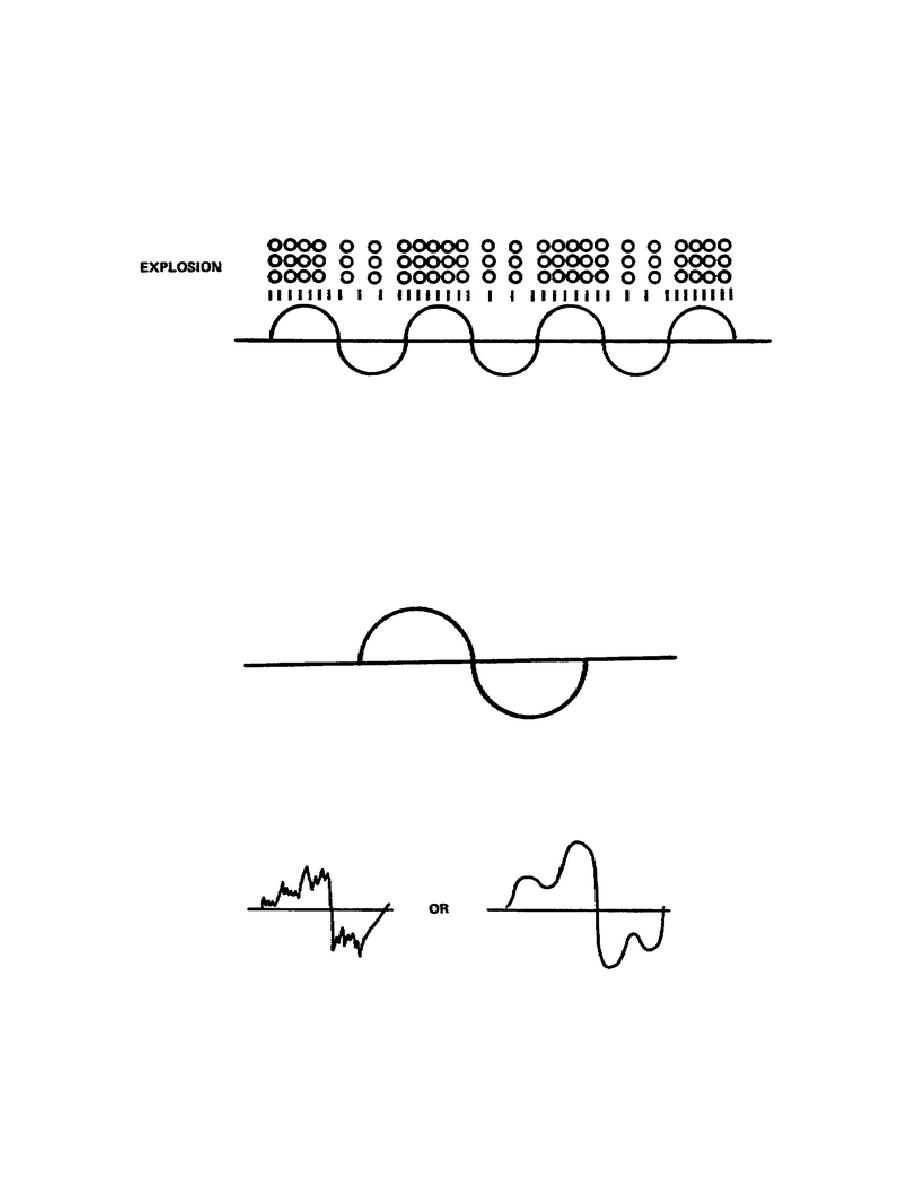
d. The compressions and rarefactions occur quickly and simultaneously to produce a situation
in which the colliding molecules react like a wave motion. That is, the energy transfer resulting from
colliding molecules acts like a wave motion which can be bent, reflected, broken up, etc., just like light.
e. Because of this, the term "sound waves" is used to describe the complex combination process
of compression and rarefaction between colliding molecules in a medium (fig 1-5).
Figure 1-5. Rarefactions and compressions combine into a "sound wave"
4.
Makeup of sound waves: Sometimes it may be necessary to see what a soundwave
(compressions and rarefactions in a medium) looks like. To do this, an electronic instrument called an
oscilloscope is used.
a. The oscilloscope provides an electronic translation of what the sound wave looks like.
Should the sound be a pure tone, (a single frequency), then the oscilloscope will show an even pattern
(fig 1-6).
Figure 1-6. Sine wave
b. If the waveform consists of two or more single frequencies, or pure tones, then it appears as a
complex wave (fig 1-7).
Figure 1-7. Complex wave
3



 Previous Page
Previous Page
